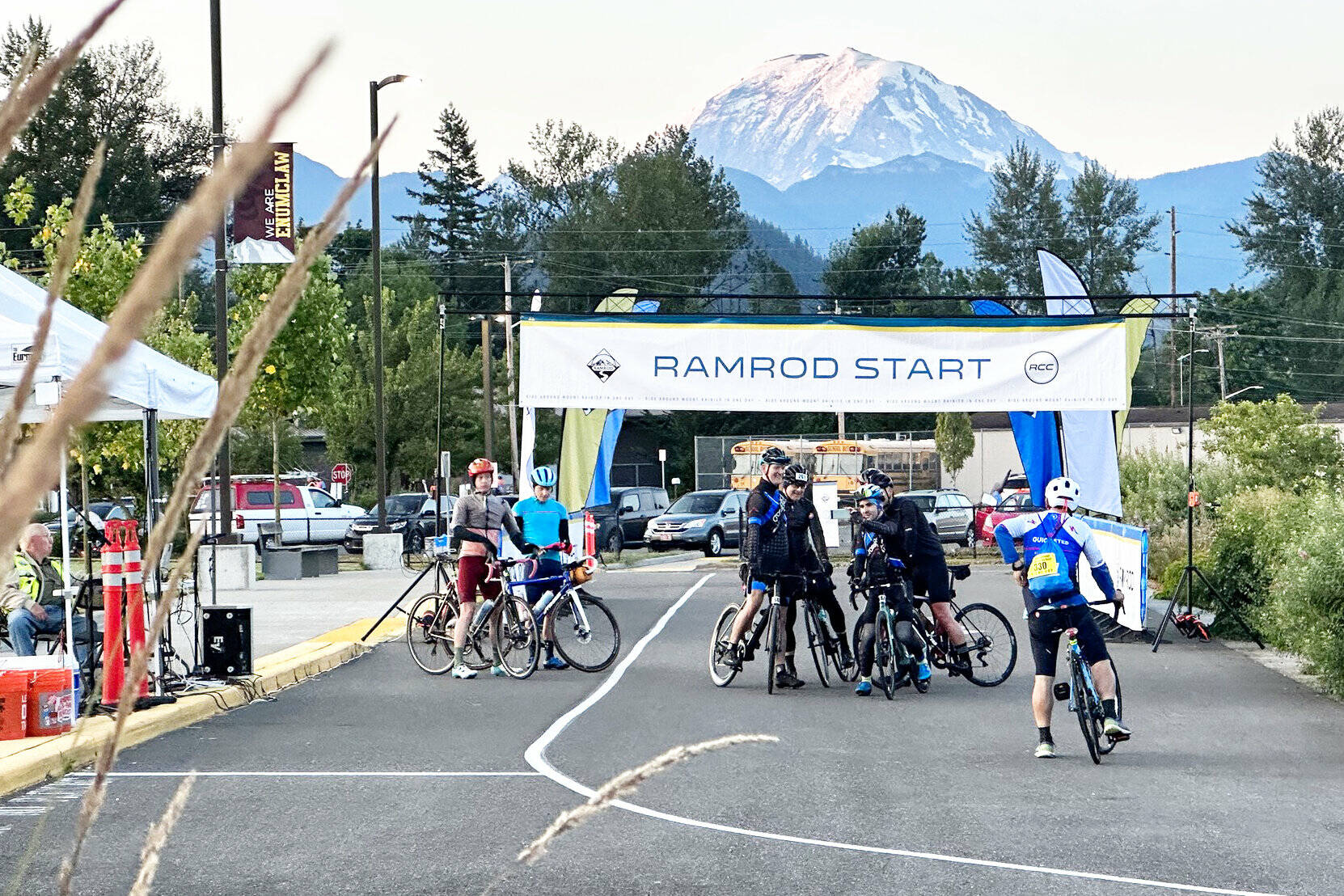CORRECTION: The print version of this article incorrectly reported that Mount Rainier National Park suggested RAMROD reschedule their ride to September, after the peak season. It was Rep. Kim Schrier’s office that made this suggestion. This article has been updated. Additionally, the $500,000 economic impact was not for just the city, but the total impact from riders coming to Washington.
In July, hundreds of bike riders normally descend on Enumclaw to ride around Mount Rainier in one day.
Or, they used to, as it appears Mount Rainier National Park has denied the RAMROD event from using Stevens Canyon Road, which would take the bicyclists from Paradise to Stevens Canyon through the park.
A little history: According to Joe Matthews, president of the Redmond Cycling Club (RCC) that organizes the event, the Club and Mount Rainier park staff had a great relationship over the last 39 years that this event has been held.
But then park construction on Stevens Canyon Road meant that RAMROD had to shift gears and, instead of going through the park in 2022 and 2023, needed to go around.
With construction now at an end, the RCC, excited to get back to the normal route, filed for an early special use permit back in November 2023 for the event.
But Matthews said the request was denied last January by Mount Rainier Superintendent Greg Dudgeon, who was selected for this position in July 2021. Over the last three months, the Redmond Cycling Club has not been able to come to an agreement with the park.
“This ban is an existential threat to RAMROD because of economic viability and rider safety,” Matthews said, adding that participation in RAMOD shrunk by 20% each year for the last two years. Without that participation (and the financial buy-in), the event cannot survive, he continued, and even canceling one year could spell doom for RAMROD.
Additionally, the end of RAMROD could have a financial impact on Enumclaw, which is where the event starts and ends; Matthews said the event pumps about $500,000 into various communities in Washington, including Enumclaw and those along the event route.
The issue appears to be centered around park popularity and congestion.
“Visitation at Mount Rainier National Park has increased by more than 40 percent in the past 10 years (1.14 million in 2013 vs. 1.62 million in 2022),” Terry Wildy, Mount Rainier’s chief of interpretation, education, and volunteers said in an email interview.
“About 70 percent of the park’s visitation occurs in the summer, from July to September. Much of that use is focused on the entrances leading to the developed Paradise and Sunrise areas at the base of the mountain.”
Because of this growth in park visits, she continued, RAMROD’s special permit request to use Steven Canyon Road was declined, as the event would “cause unacceptable impacts to park resources or values,” which include public health and safety, environmental or scenic values, experiences for visitors not participating in the permitted activity, and more.
“Having 800 cyclists and additional volunteers on the historic road within the most heavily travelled corridor at the height of the park’s visitor season conflicts with these values,” Wildy continued. “The safety of all visitors is a priority for the park.”
However, Matthews said the park had no issues with the 2019 ride — the last one on the normal route before the COVID-19 pandemic — which was well within that 10-year visitor growth period.
According to Mount Rainier National Park data, that year saw nearly 950,000 vehicles enter the park, or about 2.25 million people; in 2023, there were just over 1 million vehicles, and about 2.5 million people.
Mount Rainier’s April 2023 draft transportation plan reports that the Nisqually entrance, which would be used by RAMROD to enter the park, can experience up to two miles of queued cars on the most popular days, which can cause up to an hour and a half wait times.
This is partly why the national park is starting a timed entry program for Paradise and other popular areas, in order to better control when people are able to enter the park and reduce congestion.
But Matthews contends that with the new timed entry program, congestion will be reduced — and that’s on top of the fact that RAMROD is scheduled on a Thurdsay, which already sees less traffic than the peak times on weekends, and that RAMROD participants pre-pay, so they don’t have to stop at the ticket booth.
RAMROD has suggested a few solutions, including counting groups of three bicyclists as one vehicle and taking advantage of the timed-entry system (which would further reduce car entries, as the system intends), but Mount Rainier appears adamant that Stevens Canyon road is closed to the event.
“Stevens Canyon Road is not part of any approved route,” Wildy said. “…There is only one route approved for the 2024 RAMROD event, the same route used in 2022 and 2023.”
According to Matthews, Rep. Kim Schrier (D-8) had suggested to RAMROD that event could use Stevens Canyon Road after September, when the peak season is over and the timed entry program ends for the year.
However, in a presentation to the national park, pre-emptively said this would not work, as the lack of daylight would make the route unsafe.


